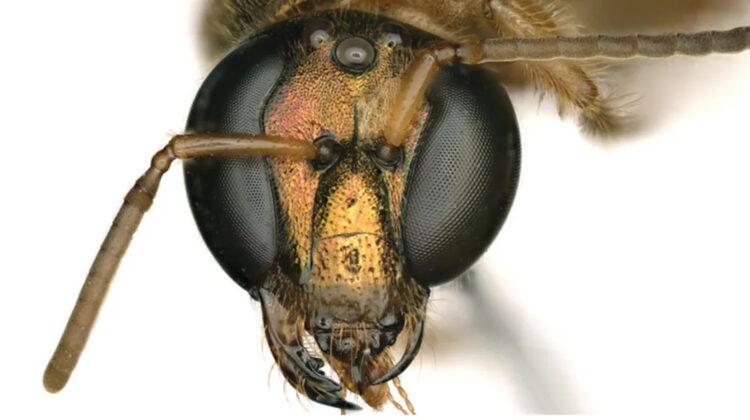
Researchers discovered a truly unique bee in the neotropical forests of Panama: the left side of its body is male, while the right is female.
Scientists led by Cornell University discovered this unique Neotropical bee Megalopta amoena while studying nocturnal bees in the forest of Barro Colorado Island, Panama, as reported in the Journal of Hymenoptera Research.
When the two halves of the body appear to express different sexual characteristics, the specimen is known as a bilateral gynandromorph. While the extremely rare condition has been observed in a variety of animal species, including at least 140 bee species, this is the first time it has been documented in a nocturnal bee.
“Finding the M. amoena felt like striking gold or winning the Darwinian lottery,” said Erin Krichilsky, the study’s lead author and a Cornell University student.
The specimen’s most striking feature is how clearly the gynandromorphism can be seen. It has a long antenna, a smoother mandible, and a skinny hind leg on its left side, which is the male side. Meanwhile, the female side has a short antenna, a spikey mandible, and a bulky hind leg.

The researchers were also able to analyze the bee’s circadian rhythm, or internal clock that coordinates foraging times, in order to learn more about how gynandromorphism affects animal behavior. This revealed that the gynandromorph began foraging earlier in the day than both male and female bees, and that its busiest periods coincided with female behavior. This could imply that this species’ foraging behavior is more closely associated with the right side of the brain.
You’re probably wondering why some animals exhibit gynandromorphism. Scientists believe the condition is caused by two main mechanisms.
The combination of sex chromosomes determines biological sex. Males have an X and a Y chromosome in humans and some other species, whereas females have two X chromosomes. (In insects, birds, and some other species, sex is determined by the combination of Z and W chromosomes, but for the sake of simplicity, we’ll stick to X and Y in this explanation.)
This is determined by whether the “successful” sperm carried an X or Y chromosome to bind the mother’s egg, which will always have an X chromosome. Two sperms accidentally enter a rare form of an egg with two nuclei, resulting in the embryo carrying both XY and XX cells in one of the mechanisms that create a gynandromorph.

Leave a Reply